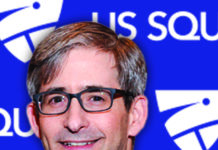By Kevin Klipstein
Working at U.S. SQUASH, it often feels like we walk around with a big target on our backs. To paraphrase what a respected urban program director said in empathizing with this, “When we do anything, people always thank me, and tell me what great work we’re doing. All U.S. SQUASH gets are complaints and the blame for everything.”
It’s quite possible that the majority of locker room squash conversations that are lamenting where the game is not, start with, “the USSRA should…” (likely unaware that we changed our name to “U.S. SQUASH” two years ago). Unlike other sports, squash players don’t have the management of the pro leagues and their favorite teams to opine on. There is no online fantasy game to let people act as their own owner, manager, or even Commissioner in their sport.
In squash, I rarely hear people make much of a distinction in the management of the sport between the pro tours, college squash, urban squash, U.S. SQUASH, districts, etc. To most people, it’s just squash. As a result, I frequently find myself in the position of explaining to people what we do.
While we are an institution that has existed for over 100 years, individuals make the Association what it is today. This includes an incredibly hardworking and professional staff, a dedicated Board of Directors, and more than 150 volunteers who serve on U.S. SQUASH Committees. Several hundred others serve on the over 30 local District Boards. Finally, there are now 13,000+ members, more members than at any time in the Association’s history.
Having now been in my role as CEO for five years, I thought it would be useful to pause briefly, and highlight just a few accomplishments in those years, beyond the 60% growth in membership since 2004, in order to better inform some of those locker room conversations about squash and U.S. SQUASH’s role in the game.
In 2004, there was no formal connection between the Association and teaching pros to assist them or squash clubs in developing the sport. Today, our Squash Professionals Affiliate (SPA) and “PLAY SQUASH” programs provide a range of valuable benefits to squash professionals, while supporting U.S. SQUASH initiatives to drive growth in the game. The new PLAY SQUASH program provides pros the tools they need to communicate with their members, and manage a club website offering ladders, box leagues and tournaments. Results from these competitions are all integrated into official club, district and national rankings.
In 2004, middle or high school squash were not part of the squash vocabulary, perhaps beyond boarding schools. No National Championships even existed. This February, 125 high school teams will compete for our National Championship in what will be the largest squash tournament in the world. More than 30 schools will play for the Middle School Championship title later this month. Public schools in several states have granted varsity status to squash in the last few years, creating a more diverse group of kids playing squash each year.
In 2004, 550 juniors earned a final season ranking by playing four or more tournaments; in 2009, 1,035 did—an 88% increase. Urban squash players are beginning to make their mark in competitions nationally, and the number of programs and players has also doubled.
In 2004, our Junior Men’s team had recently finished 14th in worlds, they finished 10th in 2008. Our Men’s team had not finished higher than 19th in nearly two decades, they finished 12th last fall. Few junior players had ever reached the round of 16 of any World Championships. In 2009, three girls did in the same tournament.
In 2004, no link existed between the College Squash Association and U.S. SQUASH. Once players left the juniors, their connection to the larger squash world was lost, often for years, if not decades. Today, U.S. SQUASH powers the basic infrastructure of the CSA in a close partnership, offering memberships to all college players in addition to a bridge to squash as young adults.
In 2004, the Association loosely managed 11 National Championships, called different names depending on who happened to promote them in that year. This season, the Miller Zell U.S. Championship Series boasts 20 Championships. Participation in our Championships has increased from fewer than 2,000 players to more than 5,000 in this period.
During this time, we have streamlined and strengthened the governance of the Association, stabilized the financial management structure and are half way through implementing against a 3-year strategic plan. We have updated the brand and our name, consolidated our technology platform and re-launched our website.
As we look forward, there are still many opportunities. The rankings have improved dramatically, but still have a ways to go. We are renewing our focus on our Coach and Referee Certification programs, two essential elements to a strong foundation for the sport. The U.S. Open should be the most prestigious squash tournament in the world. Squash needs a broader audience to attract major sponsors.
The staff and I are extremely passionate about seeing squash succeed as a sport. While we certainly accept the slings and arrows as “coming with the territory,” it’s important to understand that, along with our harshest critics, we are all aiming for the same target.



